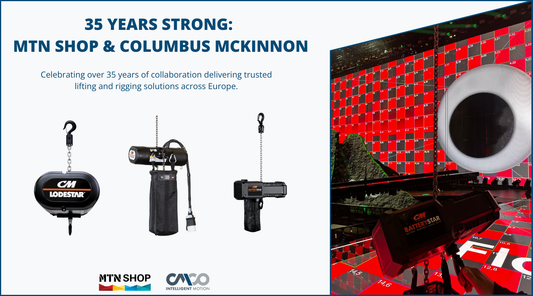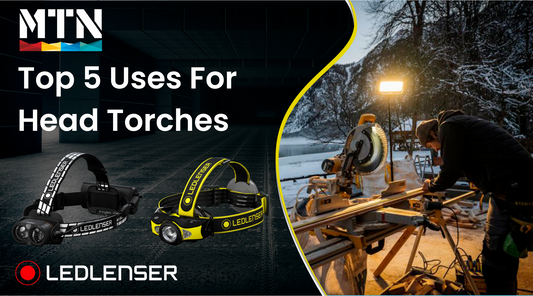Eilon Engineering: The Pinnacle of Safe Load Monitoring
Article
What do NASA, Boeing, Cirque du Soleil and Disney all have in Common? Eilon Engineering—world leaders in load monitoring and safety.
Eilon Engineering
Eilon Engineering is a leading innovator in the development and manufacture of advanced load and force measurement systems for both industrial applications and the entertainment industry.
They offer Load Monitoring and Overload Prevention systems under the renowned trade names of Ron Crane Scales for industrial and Ron StageMaster for entertainment industry products. Their customers range from smaller independent companies to much larger fortune 500 companies such as NASA, Boeing, GE, Cirque du Soleil, and Disney.
"It's a type of insurance and, at the end of the day, gives peace of mind. We are very satisfied with the Ron StageMaster load cells we own."
-Martin Gehring, Head Rigger for Rammstein
Whether you’re hanging tons of light and sound equipment for a music festival or lifting manufacturing equipment the size of jet engines, safety is paramount. Eilon Engineering’s load cells, crane scales, dynamometers, and overload detectors for cranes and hoists are all vitally important safety devices. Additionally, their safety equipment also improves efficiency and reduces manufacturing costs.
Ron StageMaster—No more overloads on stage!
In 1993, Eilon Engineering pioneered the incorporation of wireless communication into their systems. technology allows you to monitor dozens of load points on a single screen to avoid dangerous overload situations, ensuring that everyone—from performers to crew and audience members—is safe.
Wireless communication allows for continuous load monitoring and quicker response time. The Bluetooth-compatible Portable Radio Receiver (PRR) works with iPhones and iPads and doesn’t require WiFi to operate.
Additional advantages of Ron StageMaster systems:
- Monitors up to 200 load cells per second
- 1% accuracy
- Battery life up to 5,000 hours
- Optional extreme range up to several miles/km
- 200 load cells per monitoring station
- Integration of wired and wireless systems
- Fatigue rated load cells
Safe and Efficient Stage Load Monitoring
In order to have the safest performance possible, it’s important to have the right equipment. It’s also important to properly monitor said equipment and loads.
Follow these guidelines to ensure safe and efficient load monitoring:
1. Repeatability and AccuracyFirst, you must be sure that your cell loads enable an accurate measurement (0.1% of full scale) with high repeatability. This enables consistent and reliable load measurement.
Classic vs Shackle Pin
There are two main load cell types that are common for stage load monitoring: Tension load cells (Classic) and Shackle Pin load cells. Each of these two types have differences when it comes to accuracy and repeatability. Eilon manufactures both types of load cells; however, the Classic load cells have more benefits, including less cost, increased accuracy, and better linearity and repeatability. Eilon Classic also often enable a lower headroom loss.

Comparatively, shackle pin load cells are less accurate because they measure shear strength (whereas Classic load cells measure by tension and compression strands). They also bend when loaded. The bending level varies depending on the load level and upon the contact point of loading. Because the contact point varies in each loading (random), shackle pin creates poor repeatability. While an included bobbin decreases this problem, the problem still remains.
2. Continuous MonitoringThe safest monitoring is that which is continual: 24 hours a day, 7 days a week. Wireless monitoring increases the safety, but only when it’s done properly.
Principles of safe wireless load monitoring:
- All load cells are active at all times
- All load cells transmit at all times (no sleep or standby whatsoever)
- Receiver gets continuous information from all load cells at all times
- All info is displayed at all times
- Alarms for overloads and severe overloads are activated in real time
- Receiver displays warning in the event of communication failure from a specific load cell
When choosing load cells, ensure that all are fatigue-rated. Fatigue-rated load cells will be able to withstand an unlimited number of cycles as long as they are not overloaded.
Standalone Load Cells vs. Hoist-Integrated Load Cells
If you’re wondering why you should choose standalone load cells over those integrated into hoists, there are a number of advantages. For one, standalone load cells have a much wider range of applications, such as fixed hanging points in venues. They also offer greater flexibility in terms of capacity, safety, and wired/wireless options. Standalone load cells can adapt to your ever-changing projects and designs. Because they are separate, you can add load cells to existing hoists without issue.

Load cells that are integrated into hoists get their power supply from the hoist. This is a safety problem because when the power is shut off post-installation, the load cells cannot operate. This makes continual monitoring impossible. Additionally, if either the hoist or load cells need service or calibration in integrated systems, the other device is not operable during this time.
Why Choose Ron StageMaster?
Eilon Engineering’s entire line of products combine the best materials and components with the latest technology. This is the trusted brand utilized internationally on tour with such entertainment giants such as AC/DC, Rammstein, Blue Man Group, and many others.

You can find our line of Ron Stagemaster load cell systems and products here.







